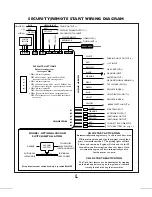
Bypassing Factory Theft Deterrent
Systems
Many newer vehicles are now factory-equipped
with anti-theft systems that use either a resistor
coded key or a passive transponder that disables
the fuel system unless a properly coded key is
inserted into the ignition cylinder. To integrate a
remote starter into these vehicles, you must
determine which type of factory anti-theft
system is equipped, then use the proper bypass
module for that system.
General Motors Anti-theft Systems:
Many late-model GM vehicles are equipped with
one of three basic anti-theft systems; Passkey,
Passlock, and Passkey 3. Standard Passkey
systems are easily identified by the resistor chip
visible on the shaft of the key. Passlock systems
do not rely on a resistor equipped key. Instead
they use a resistance code generated when the
key is turned in the ignition cylinder. Both of
these systems have an anti-theft indicator in the
instrument cluster. To properly interface into
these systems and retain full functionality of the
factory anti-theft system, use the APV-1 module.
The Passkey 3 system, which is found on GM
vehicles 1999 and newer, is a transponder based
system (described below).
Use the APP-1
module to integrate into Passkey 3 equipped
vehicles. This module allows full functionality of
the factory anti-theft system and requires the
use of a spare key.
Passive Transponder Systems:
Passive transponder systems have become the
most popular anti-theft system among vehicle
manufacturers (Ford, Honda, BMW, Toyota,
Nissan and others). This system requires use of
a tiny passive transmitter housed in the base of
the key. This device activates when placed close
to the vehicle’s ignition switch. The starter will
usually crank but the fuel system will be disabled,
mot allowing the vehicle to run, if the
transponder is not detected. To properly
interface into transponder systems, use
the APP-1 module. This module allows full
functionality of the factory anti-theft system and
requires the use of a spare key.
7





























